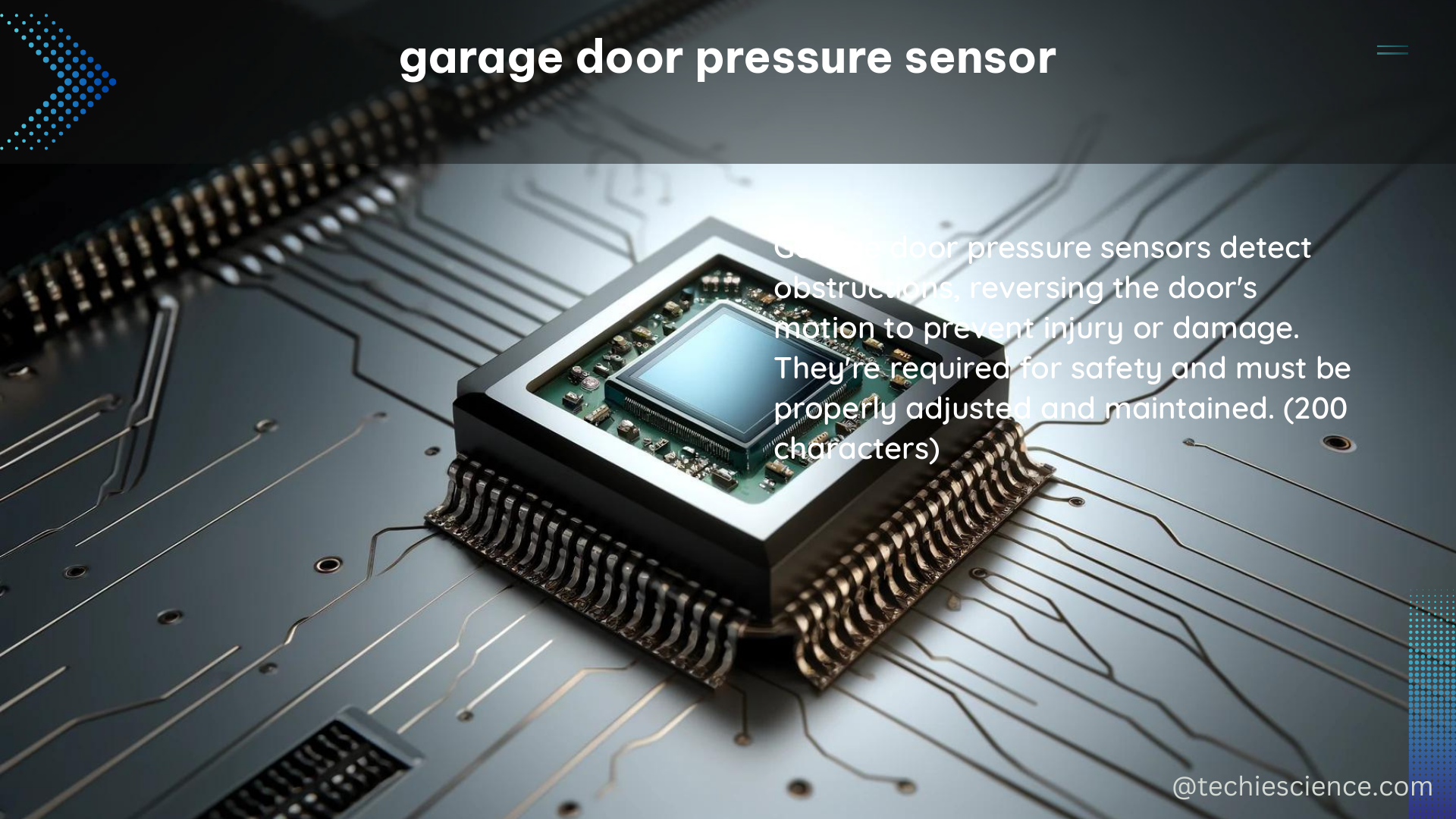The garage door pressure sensor is a critical component in the safety system of an automatic garage door opener. It is designed to detect any obstruction or pressure on the door while it is closing, preventing damage to property or injury to individuals. This sensor is typically located at the bottom of the door and works by emitting an infrared light beam that is interrupted when an object comes into contact with the door.
Technical Specifications of Garage Door Pressure Sensors
The technical specifications of a garage door pressure sensor can vary depending on the manufacturer and model. However, some common features include:
- Sensing Range: The sensor can typically detect objects within a range of up to several inches from the door.
- Operating Voltage: The sensor operates on a DC voltage, typically ranging from 12V to 24V.
- Current Draw: The sensor has a low current draw, usually less than 50mA.
- Sensitivity Adjustment: Many sensors offer adjustable sensitivity settings to accommodate different door weights and heights.
In terms of measurable and quantifiable data, the garage door pressure sensor can detect pressure or force in units of weight, such as pounds or kilograms. For example, a sensor may be rated to detect a minimum force of 15 pounds, which would trigger the door to reverse direction and open again. The sensor may also have a response time of less than 1 second, ensuring quick and accurate detection of obstructions.
Troubleshooting and Adjusting Garage Door Pressure Sensors

Here are some detailed steps for troubleshooting and adjusting a garage door pressure sensor:
1. Checking Sensor Alignment
Ensure that the sensor eyes are properly aligned and facing each other. Any misalignment can cause the sensor to trigger a false positive. Use a laser level or a plumb line to ensure the sensor eyes are perfectly aligned.
2. Cleaning the Sensor Lenses
Dirt, dust, or debris on the sensor lenses can interfere with the infrared beam and cause the sensor to malfunction. Use a soft, dry cloth to gently clean the lenses, taking care not to scratch the surface.
3. Adjusting the Sensitivity
If the sensor is too sensitive or not sensitive enough, adjust the settings accordingly. Some sensors have manual adjustment knobs or buttons, while others may require programming through the garage door opener remote control. Refer to the manufacturer’s instructions for the specific adjustment process.
Sensitivity Adjustment Considerations:
- Door Weight: Heavier doors may require a higher sensitivity setting to detect obstructions.
- Door Height: Taller doors may need a wider sensitivity range to cover the entire door height.
- Ambient Light: Bright sunlight or other light sources can interfere with the sensor’s infrared beam, requiring sensitivity adjustments.
4. Testing the Sensor
Use a piece of wood or other object to test the sensor’s sensitivity and response time. The door should reverse direction immediately when the object comes into contact with the sensor. Measure the response time using a stopwatch or a digital timer to ensure it meets the manufacturer’s specifications.
5. Replacing the Sensor
If the sensor is damaged or malfunctioning, replace it with a new one that meets the specifications of your garage door opener. Refer to the manufacturer’s instructions for the proper installation and configuration of the new sensor.
Additional Considerations
- Sensor Compatibility: Ensure that the replacement sensor is compatible with your specific garage door opener model. Check the manufacturer’s recommendations or consult with a professional if you’re unsure.
- Sensor Placement: The sensor should be positioned at the appropriate height and distance from the door to ensure optimal detection of obstructions.
- Sensor Wiring: Properly secure and protect the sensor wiring to prevent damage or interference with the sensor’s operation.
- Sensor Maintenance: Regularly inspect and clean the sensor lenses to maintain optimal performance and prevent false triggers.
By following these detailed steps and considerations, you can effectively troubleshoot, adjust, and maintain your garage door pressure sensor to ensure the safety and proper functioning of your automatic garage door system.
References:
- Garage Door Pressure Sensor Circuit
- Garage Door Opener Safety Sensors
- How to Adjust Garage Door Sensors

The lambdageeks.com Core SME Team is a group of experienced subject matter experts from diverse scientific and technical fields including Physics, Chemistry, Technology,Electronics & Electrical Engineering, Automotive, Mechanical Engineering. Our team collaborates to create high-quality, well-researched articles on a wide range of science and technology topics for the lambdageeks.com website.
All Our Senior SME are having more than 7 Years of experience in the respective fields . They are either Working Industry Professionals or assocaited With different Universities. Refer Our Authors Page to get to know About our Core SMEs.